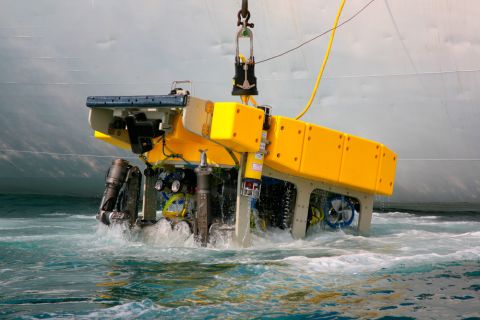As competition in the oil industry heats up both domestically and internationally, oil and gas companies of all sizes need to reinvigorate efforts in their continuous improvement initiatives to optimize operations and ensure sustainable gains in productivity and throughput. Capitalizing on these opportunities will require more than incremental improvements – an entirely new level of capability will be necessary.
According to the National Energy Board, Canadian oil production will increase by 75% from 2012 levels by 2035. An International Energy Agency assessment estimated that US oil production will reach 11.1 MMb/d in 2020. In Australia, new technologies such as floating LNG plants are currently being tested. Argentina is scaling up its shale gas production, and China is exploring its shale resources to help meet its rising energy needs.
Continuous improvement (CI) has been a primary area of focus for some of the largest oil and gas companies, which have spent years building internal CI teams to capture opportunities for cost savings and revenue enhancement. But even these organizations have unrealized opportunities to improve their CI capabilities and can benefit from reenergizing their operational excellence programs as they venture into relatively new technologies for extraction methods such as hydraulic fracturing, oil sands bitumen extraction, or offshore drilling.
Effective leadership in CI is critical to generate optimal results. All too often, however, organizations have internal CI leaders with just basic knowledge of CI and different backgrounds from one another, which makes standardization difficult. Compounding the issue, oil and gas executives point to a shortage of skilled CI professionals with geosciences backgrounds.
The opportunities for investing in CI now are great, and internally led CI initiatives can capture hundreds of millions of dollars, which can then be put to use in moving forward with capital-intensive projects.
Organizations can ultimately build and own the necessary capability by first bringing on external CI experts with experience in lean and process improvement as well as managerial experience to serve as effective coaches to internal CI teams. The “CI coaches” can observe, analyze, and develop a path toward a sustainable model for internal capability development.
By taking this approach, one US $14 billion business is on track to generate $250 million in cost savings in the next two to three years out of a total cost base of $5 billion.
Impact of effective CI
There are five significant areas where effective CI teams can generate significant impact:
1. Capacity. By using value stream mapping and other tools to illustrate the constraints and understand the main contributors to throughput – such as the uptime and availability of equipment like extractors and upgrading machinery – companies can increase capacity and reduce bottlenecks. Both discrete assets (e.g., haul trucks) and process-driven assets (e.g., boilers) need to be evaluated for their impact on final throughput. High demand for crude oil and synthetic products means that any constraints in production will have a negative impact on top-line growth.
2. Safety. Safety is not only a focus of CI but a byproduct. CI tools lead to better safety procedures and measures by reducing variability and increasing accountability. Risk mitigation and compliance are critical factors in achieving consistent and reliable operations. Projects ensuring that industry-wide safety and operational codes are followed are well worth the investment as they reduce the risk of fines or work stoppages (for outside entities audits), which can be very costly. For example, field-level risk assessment compliance failures can carry penalties from the government.
3. Subcontractor optimization. Much of the work done by oil and gas companies (e.g., construction, maintenance, equipment operation, etc.) is often performed by subcontracted resources. The key factors to improving subcontractor productivity in a sustainable way are: (1) standardizing their work; (2) making sure they follow internal procedures; and (3) achieving rapid onboarding in terms of processes and regulations. Increasing productivity allows organizations to minimize the hours worked by outside contractors, resulting in short- and long-term cost savings.
4. Leader standard work. CI leaders should establish standard operations not just for the people on the shop floor but throughout the organization. Setting up a framework of accountability and standard work for leaders and managers allows them to manage resources in a more structured, official way, improving efficiency both top-down and bottom-up.
5. Capability development. Mid-level and supervisor-level leaders may lack the facilitation, influence, and overall managerial skills to navigate the politics within complex organizations. By providing leadership and managerial skills-building sessions, oil and gas companies can develop CI leaders who generate tangible results instead of playing a supporting role or focusing on nonvalue-adding projects.
Developing highly effective CI leaders
To maximize cost-saving and/or revenue-generating opportunities in the categories listed above, organizations must equip their internal CI leaders with the necessary skills to galvanize change.
This may require first investing in an external resource to generate results at the beginning, leading to buy-in around the CI culture and its impact. Once the opportunity for cost savings and revenue enhancement has been substantiated with real metrics of success, the external resource can transfer the skills and expertise to internal resources.
By building effective CI capabilities and developing skilled CI leaders, oil and gas companies can capture the same benefits that leading organizations have been capitalizing on for more than a decade.
For larger organizations, programs like customized lean and CI training, operational excellence certification programs, and cross-industry event participation and training can generate significant value. For example, striving to achieve recognition in this area through a CI excellence award like the Shingo Prize (a standard in operational excellence and CI management principles) will energize CI teams and business units as a whole.
Organizations of all sizes can benefit from improving their CI capabilities to optimize standardization and procedural care for new extraction technologies, methods, and geographies. For example, companies currently working with shale deposits in the northern US are facing such rapid growing throughput requirements that they may neglect to take the time to standardize new methods for long-term benefits. This short-term outlook will leave them unprepared for new competition.
Retaining a competitive edge
To be competitive, oil and gas companies around the world will need to generate sustainable gains in productivity and throughput as well as enable continuous innovation. An effective CI team powered by strong leaders will be critical. Now is the time to invest in developing these leaders and providing them with the necessary skills and organizational support to succeed in the years ahead.
Recommended Reading
US Oil, Gas Rig Count Falls to Lowest Since January 2022
2024-05-03 - The oil and gas rig count, an early indicator of future output, fell by eight to 605 in the week to May 3, in the biggest weekly decline since September 2023.
Pemex Reports Lower 2Q Production and Net Income
2024-05-03 - Mexico’s Pemex reported both lower oil and gas production and a 91% drop in net income in first-quarter 2024, but the company also reduced its total debt to $101.5 billion, executives said during an earnings webcast with analysts.
Chouest Acquires ROV Company ROVOP to Expand Subsea Capabilities
2024-05-02 - With the acquisition of ROVOP, Chouest will have a fleet of more than 100 ROVs.
SLB, OneSubsea, Subsea 7 Sign Collaboration Deal with Equinor
2024-05-02 - Work is expected to begin immediately on Equinor’s Wisting and Bay Du Nord projects.
SilverBow Makes Horseshoe Lateral in Austin Chalk
2024-05-01 - SilverBow Resources’ 8,900-foot lateral was drilled in Live Oak County at the intersection of South Texas’ oil and condensate phases. It's a first in the Chalk.




